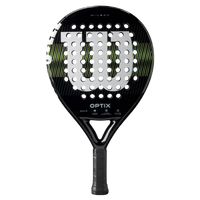Is padel a team sport? At first, it seems obvious, since it’s always played in doubles. But when you take a closer look, padel doesn’t quite fit neatly into either category the way you might expect.
An individual approach in a two-person sport
Unlike traditional team sports, where players are bound to a club, padel works differently. In padel, teammates aren’t tied together by a contract. For amateur players, every match or tournament can be an opportunity to play with a different partner. At the professional level, even though most pairs are meant to last at least a little while, changes often happen overnight due to results, opportunities, and of course, compatibility
Another factor that highlights the individual side of padel is training. While group sessions exist, and can be interesting, many players prefer private lessons or small-group practices. Working on technique is a big part of a padel player's journey. To put it into practice, players often do diagonal 1v1 drills or games, known as 'cruzado' in Spanish.
Of course, it's also crucial to train with your partner to build automatisms and work on tactics. But interestingly, some professional players don’t even live in the same city as their teammates. This highlights how padel training involves a significant amount of individual practice.
The crucial bond between partners
Despite its individual aspects, it is impossible to ignore that padel relies on a strong partnership dynamic. The relationship between partners is crucial—communication, trust, and complementarity are the pillars of a successful duo. At the highest level, coaches have specific expectations for each player. In a classic right-handed pair, for instance, the right-side player is typically expected to excel in defense, while the left-side player must be decisive when necessary. This distribution of roles and responsibilities clearly mirrors the demands of team sports.
As matches progress, players learn to adapt to different partners' styles. Understanding their strengths, compensating for their weaknesses, and adjusting one's own game accordingly is essential. A lack of chemistry on the court immediately impacts the score. Even though padel does not rely on a fixed team, it requires a high level of adaptability and a strong sense of teamwork.
A heavy individual responsibility
In padel, each player carries significant responsibility for the outcome of the match. Playing in pairs means there is no room to hide behind multiple teammates, as in traditional team sports. Every mistake has a direct impact on the score, making mental preparation essential. Like in tennis, it is crucial to clear the mind between points, stay composed, and refocus after each rally. Managing emotions plays a key role in maintaining consistent performance.
Communication between partners is also a determining factor. During side changes and between points, discussing strategies, offering encouragement, and addressing mistakes without creating tension is vital. Strong psychological and tactical understanding helps teams approach key moments with confidence and efficiency.
Neither fully individual nor fully team-based
So, is padel an individual or a team sport? The truth likely lies somewhere in between. Each player must develop individually, train independently, and refine their own skills to be able to compete at a good level. However, once on the court, they must function as a duo, build a shared strategy, and demonstrate teamwork to achieve victory.
Padel is clearly a hybrid sport, combining the best of both worlds. It gives you the freedom of an individual sport while also demanding the coordination and teamwork of a team sport. This unique balance is a part of what makes it so appealing and successful!
 Skip to content
Skip to content











